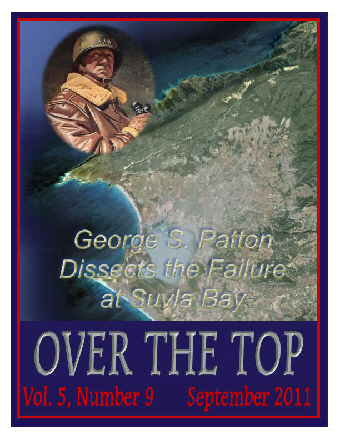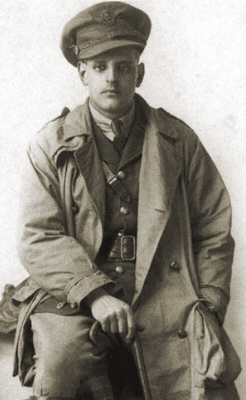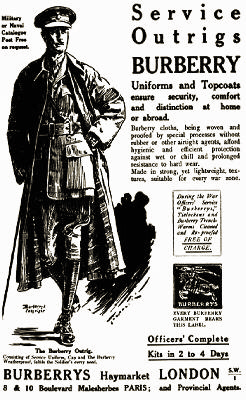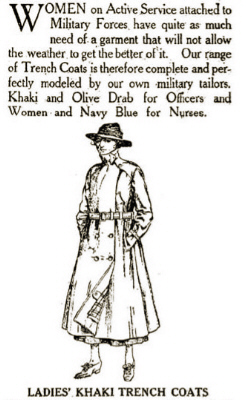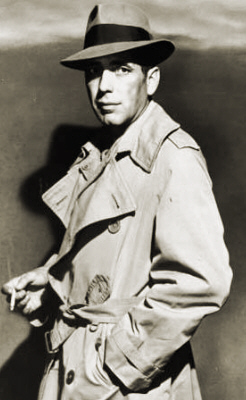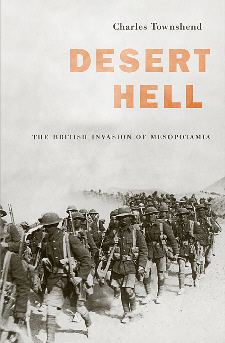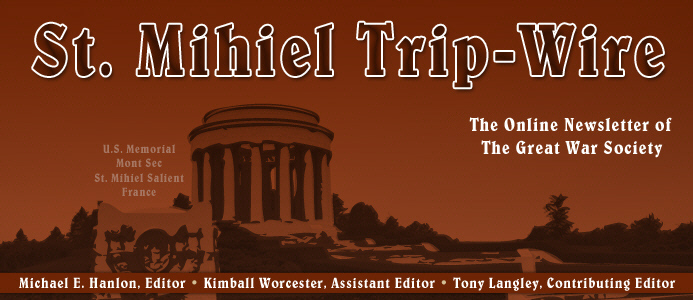

Breaking News!
The Great War Society and the WFA-USA are joining
to form the
World War One Historical Association
Visit their new unified website at http://ww1ha.org/
|
TRENCH REPORT: Just back from a very successful and exciting trip to the Italian Front of the Great War. Below you will see some images of our adventure. However, I was just beginning to recover from jet lag, when another issue completely grabbed my attention. The unification of the Great War Society and the Western Front Association - U.S. Branch into the World War One Historical Association (henceforth WW1HA) is becoming a reality. I've had to start planning for the publication of the new quarterly journal of which I will be Editor-in-Chief and get ready for the first seminar conducted under the aegis of the new organization here in my Bay Area backyard. Let me encourage anyone who will be near San Francisco on the 9th or 10th of September to join us. (Access details over on the right column.) The program this year is really intriguing, featuring a mixture of cultural and hard-core presentations. Please say hello if you are attending. I like to learn about your personal interest and any projects you might be working on.
MH
This Month's Internet Feature
The War from a Foreign Policy Standpoint
Could WWI Been Avoided? by John H. Mauer
US Foreign Policy and the Middle East
War and the Military in American History by Walter McDougall
Romania and the Great War
From WWI to WWII
New at Our Own & Our Friends' Great War Websites
Click on Title or Icon to Access
|
Our Friend Aviation Historian Ted Huscher sent this gem:
At Great War Society Sites
Some Literary Sites:
At WFA-USA Sites
|
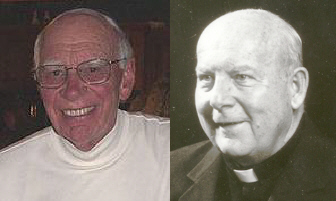
We have lost two members of the WWI fellowship recently. Peter Wood (l), Stanford University professor of medicine, was a long-time supporter of the Great War Society. He and his late wife Christine joined my first Western Front tour in 1991 and they were wonderful traveling mates. Father Joe Tyson (r), teacher and pastor of the Josephite Order, also traveled to the battlefields and was highly esteemed by everyone he met. Both of them touched many lives in their productive careers. Please take time to read their obituaries: (Peter's) and (Father Joe's)
|
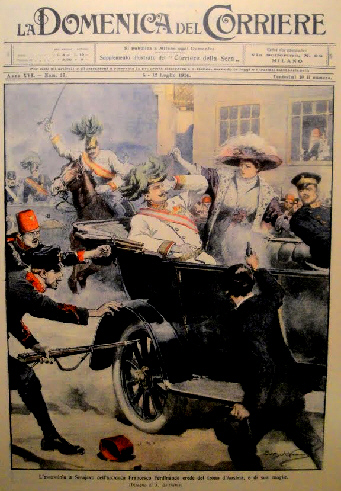
The Assassination of Archduke Franz Ferdinand
As Depicted in Italy, July 1914
|
GREAT WAR 2011 EVENT CALENDAR
|
A World War I Event Calendar
Download Word Document Calendar
Here
We have resumed maintaining our WWI Calendar. There is simply more information than we can display here on the Trip-Wire. We count on all of you who schedule WWI events to contact us with new and updated information.
(send an email with schedule information)
|
National World War I Seminar
The Soon-to-Be
World War One Historical Association Presents:
War Art & the Art of War
9-10 September, 2011
Citi-Garden Hotel
South San Francisco, CA
Near S.F. International Airport
(Download Program and Registration Form)
|
Lafayette Escadrille Seminar
Sponsored by the Mid-Atlantic Chapter
League of WWI Aviation Historians.
National Air and Space Museumís
Steven F. Udvar-Hazy Center, Dulles International Airport
10:00am - Saturday - 24 Sept. 2011 (more information)
|
Western Front Association
U.S. Branch Chapter Meetings
Check for Your Region
Regularly Updated (details)
|
Great War Society Monthly Chapter Meetings
Berkeley, San Francisco, and
Palo Alto, CA
Regularly Updated (details)
|
Send additions/corrections for our master schedule:
Email Response
|

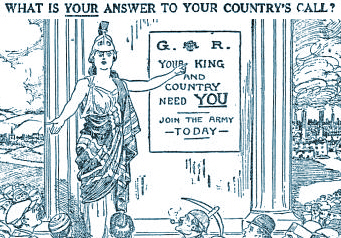
War had been declared, and the following Sunday I went with a friend of mine to Shephered's Bush Empire to see the film show. At the end they showed the Fleet sailing the high seas and played "Britons Never Shall Be Slaves" and "Hearts of Oak". And you know one feels that little shiver run up the back and you know you have got to do something. I had just turned seventeen at that time and on the Monday I went up to Whitehall -- Old Scotland Yard -- and enlisted in the 16th Lancers.
Pvt. William Dove, 16th Lancers

The first use of gas in the Great War was at Bolimov, 40 miles west of Warsaw on 15 January 1915. German howitzers fired 18,000 tear gas shells against Russian forces.
|
|
|
|
Page Two
|
|
|
 |
Visiting the Italian Front
The Isonzo scoured me like one of its stones. . .Living discounts death.
Giuseppe Ungaretti, 19th Infantry, Brescia Brigade |
In July 2011 I led a group of 26 travelers to the Italian Front for a two-week, in-depth visit. The expedition was jointly sponsored by my parent company Valor Tours, Ltd. and the Western Front Association-U.S. Branch. Our first stop was the somewhat forgotten Carso Plateau, where nearly half the casualties on the Italian Front were inflicted. The group here is at the Monte San Michele monument, which overlooks the city of Gorizia. Ungaretti -- quoted above -- fought here.
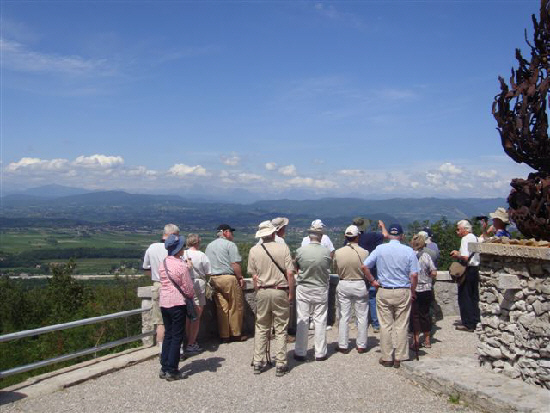
Next we moved north into Slovenia and spent two days studying the October 1917 Battle of Caporetto. Our host was Joze Serbec, the Director of the Kobarid (Caporetto) Museum, who was a wonderful host for the group. Joze here is speaking to the group in front of a detailed model of the strategic Mte. Krn (Mte. Nero) Massif.

There were two major breakthroughs at Caporetto, south and north of the town. The southerly penetration was at the river town of Tolmino shown below. The combined 14th German and Austro-Hungarian Army occupied the town and the hills on both sides of the river here. The Italian three lines of defense opposing them were closely bunched in the river valley. The attack on both sides of the river punched through all three defensive positions and advanced up both sides of the river towards Caporetto. The troops on the Italian first and second lines deployed on the mountains in the far distance, but off the left side of the image, were effectively captured en masse. This photo was taken from an Italian third-line artillery outpost on Mte. Kolovrat. The positions along this ridge were captured in the opening days of the battle by German Alpine Corps, whose ranks included Lt. Erwin Rommel.
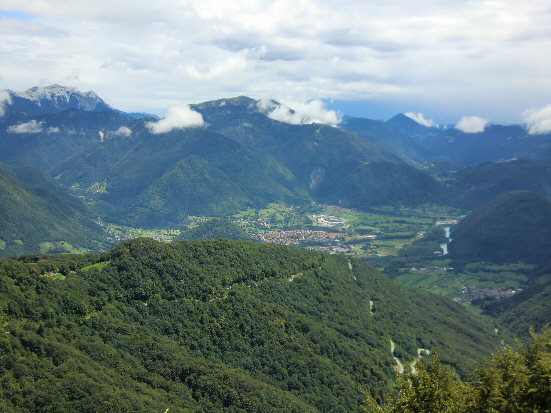
North of Caporetto there are a number of important sites pertaining to the 1917 battle, but some are also related to the longer-term fighting in the area. The memorial below is at a village called Spodnji Log (under the mountain); it honors the horrific fighting on another important mountain, Mte. Rombon. It particularly recognizes the contribution made by Bosnian mountain troops, who fought nearby. The figure on the right is of a soldier in their usual Austrian army kit, while the figure on the left is in traditional Bosnian garb and wears a fez.

Since the Italian Front featured the most extensive mountain warfare in history, a central part of our tour was hiking to mountain-top positions. Some were partly approachable by bus, but in three cases we needed to take ski lifts to jump off points. Below our group is on the post-gondola-ride leg of our climb to the top (insert) of 9000-foot Mte. Lagazuoi in the Dolomites. The mountain -- whose peak was controlled by Austrian forces -- was the location of some of the most extensive mine warfare of the Great War.
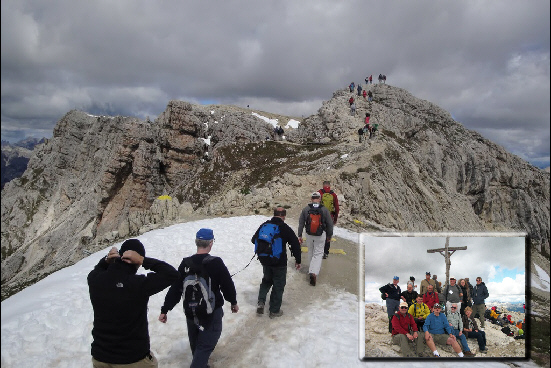
Monuments of great number and of stupendous scale were built by the Mussolini government after the war. Here our group is completing their visit to the ossuary at Asiago.
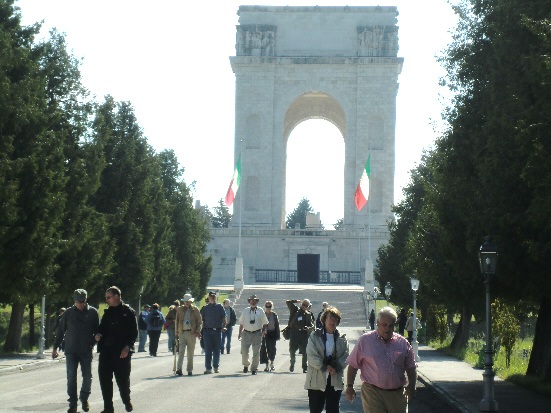
One of the reasons we were able to develop such a comprehensive itinerary is that a number of local experts stepped forward and advised me in the planning and provided guiding help when we visited their sector. These included Renzo Rocconi in the Veneto, Joze Serbec and Bojan Rustja at Kobarid, Robbie Patrignani in the Trentino, and Claudio Reginato in Bassano del Grappa. Here, I'm pictured with my good friend at the Asiago Plateau, Rebeschin Fausto, at the Sardinian Grenadiers Monument at Mte. Cengio. After running out of ammunition during the 1916 Austrian attack, it is said that the Grenadiers simply grabbed their opponents and pulled them off the nearby cliffs in a joint death leap to defend the position.
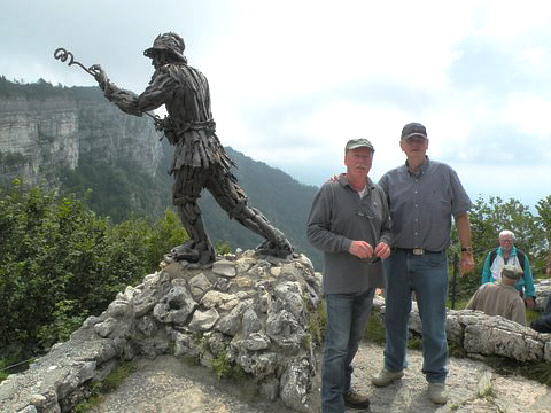
At the lower Piave River is this marker at the site where Ernest Hemingway was wounded in July 1918 while bringing cigarettes and chocolate to the frontline soldiers. This was our final World War I stop on the tour. We concluded with a day and half of pure tourism in Venice.
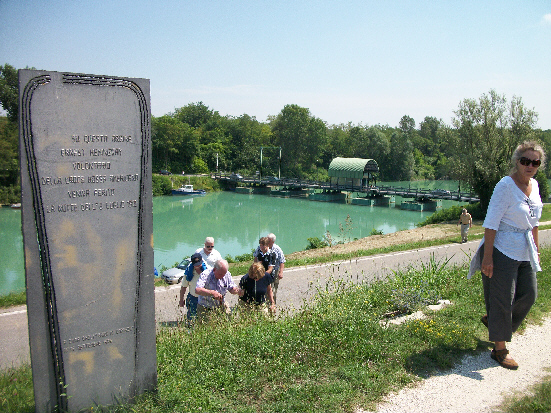
Tour members Richard Haines, Ted Huscher, Dale Snair and Gary Van Loon contributed these photos.
|
|
World War I Headlines
in the
21st Century
|
|
|
|
The History of the Trench Coat
Donna G. Wagner
[Ed. Note. Our seminar in South San Francisco this month is going to feature a fashion show of period apparel from the 1914-1918 era. The most lasting contribution to fashion by the war might be the trench coat.]
Despite its uniform-like military style that can remind one of the horrors of the Great War where it originated, the trench coat remains a popular, influential, and even symbolic item of apparel. It was adapted from an earlier design by the famous British designer, Thomas Burberry, to keep British military officers dry and warm in the trenches. He had previously patented a very tight weave of cotton gabardine using long fiber Egyptian cotton that was then treated with a chemical to withstand water. The diagonal weave also cut surface tension to further repel water. This fabric was extremely strong and did not tear easily, adding to its desirability for military wear. A gabardine coat from Burberry was worn by high-ranking generals during the turn-of-the-century Boer War in South Africa. When the World War came the British War Board authorized an updated version for the army's combat officers. British officers embraced the coat immediately, and its popularity spread to the Yanks when America joined the Great War. In the Stars and Stripes an advertisement even appeared in 1918 for trench coats for women, made in America for the Donut Dollies, Hello Girls, and nurses.
Burberry's new design, like military uniforms, featured epaulets (shoulder straps), a buckled belt with D-rings, and was double-breasted. A storm or gun flap on the right shoulder kept water from running inside when the officer raised a weapon. Cuff straps made the sleeves a tighter fit when needed or could hold a map. A rumor circulated that these or the D-rings were for carrying hand grenades, but most agree that that would not have been a safe practice. Formerly, long ankle length coats called great coats were also issued, but the trench coat was made shorter so as not to drag in the mud and water that prevailed in the trenches. The coat was excellent in cold weather with a woolen insert and also served as an emergency sleeping system. The trench coat quickly earned a high reputation for the protection and mobility it provided to the men fighting in the front lines. In World War II, the trench coat was issued in even greater numbers as part of the uniform to Americans, British, and Russians. Today the trench coat still serves in the world's militaries as weather protection for dress uniforms.
The trench coat has never faltered in its popularity for both men and women in civilian fashion. Hollywood helped boost its appeal. In movies after the war, the trench coat symbolized mystery and adventure -- it was the attire of secret agents and private detectives. Who can forget Humphrey Bogart in his trench coat in Casablanca or The Maltese Falcon, and Alan Ladd in This Gun For Hire? For women as well, the wearing of the trench coat signifies allure and danger, -- recall Marlene Dietrich, Ingrid Berman, and Joan Crawford in their great roles.
The classic Burberry trench coat is still available today for around $1,500. Newer versions that are lighter and more flexible of microfiber and modern fabrics range from $200 to $500. London Fog still sells a classic double-breasted style with wide collars and button cuffs, but no longer has the shoulder epaulets.
|
|
|

| Cavalry Makes for Great Covers
|
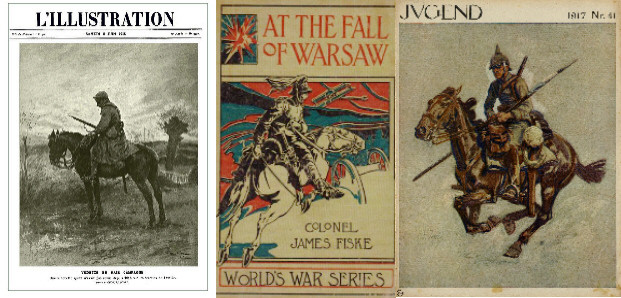
|
|
|
Subscribe to Our Online Magazine
|
|

|
|
|
Page Three
|
|
|
Access to In-Depth Articles
From On Point: The Journal of the George C. Marshall Foundation
|
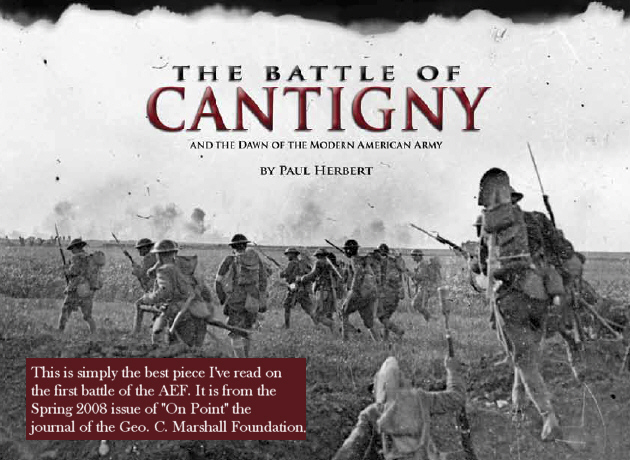
Click on the Image to Download the Full Article in PDF Format
|
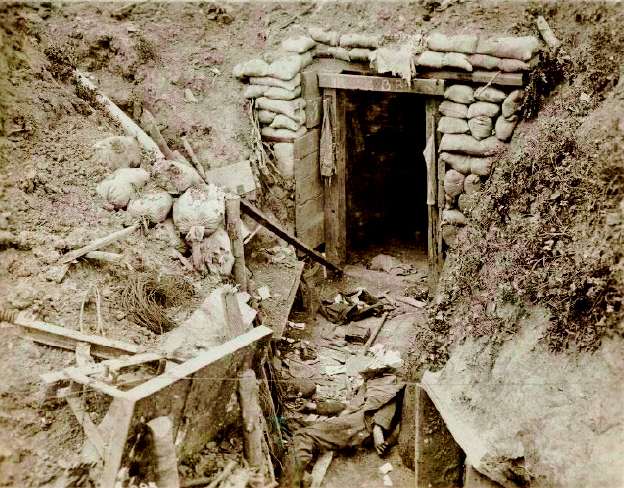
Demolished German Trench with German Fatality
(Official Photo, Collection of the Canadian War Museum)
|
|

|
 |
One "Hot Off the Presses" and a Reissued Classic
The Campaign in Mesopotamia and the Cartoons of Pershing's Showpiece Division
|
Desert Hell: The British Invasion of Mesopotamia
By Charles Townshend, Keele University, Newcastle-under-Lyme
Reviewed by Len Shurtleff
By rights this book could be subtitled "The Indian Invasion of Mesopotamia" since the initial impetus, planning, manpower, and equipment for this operation came almost entirely from India. It is a tale of imperial overreach and mission creep punctuated with misunderstandings of local political, religious, and ethnic imperatives, flawed planning, poor coordination between London and Delhi, near-impossible logistical barriers, and poor tactical execution. As a political-military history it offers an excellent primer on the tangled tribal and religious politics of Iraq before, during, and just after the Great War.
Though some historians have identified the need to protect Persian oil supplies (which provided up a quarter of Royal Navy needs) as the imperative leading to the British invasion of Mesopotamia, the more powerful motive was to protect the line of communications from Suez to India against both the Turks and from marauding Arab pirates in the Persian Gulf, as well as to keep local Arab tribes from supporting the Germans. Heretofore, Great Britain had depended upon alliances with sheiks in Kuwait and Mohammerah to protect their equities on the northern Red Sea littoral and the Shatt-al-Arab. By 1914, Britain was also cultivating the leader of the Wahhabi movement, Abdul Aziz ibn Saud, Emir of the Nejd and future king of Saudi Arabia. What they failed to take into consideration was the welter of cross-cutting tribal and religious loyalties that riddled the land soon to be named Iraq. When Ottoman Turkey entered the war and declared jihad, the Government of India became concerned millions of its Muslim subjects could revolt. It pressed London for military action and received permission to mount a limited occupation of the southern Mesopotamia port of Basra, which would protect the Anglo-Iranian oil refinery at Abadan on the Shatt-al-Arab as well as help cover communications with India, Singapore, Hong Kong, and Australasia. Starting with a brigade and continually expanding, mission creep quickly set in with Delhi coming to contemplate the land between the Tigris and Euphrates Rivers as a place to resettle India's excess peasant population.
Delhi's reach far exceeded its grasp. The British Indian Army was largely a frontier constabulary, ill equipped and ill trained for extended operations overseas. By early 1915 it had nonetheless sent two divisions of troops to Basra. One division led by Major General Charles Townshend attacked northward up the Tigris River and, despite inadequate river transport, occupied Kut. Efforts to advance beyond Kut were thrown back by Turkish forces reinforced by tough Anatolian infantry. Townshend's division was surrounded and besieged at Kut. Cut off from reinforcement and resupply, Townshend surrendered in April 1916. This was the worst British defeat since Cornwallis's surrender at Yorktown in 1781. Stung by defeat, the British reinforced and revamped the Mesopotamian command and eventually prevailed occupying Baghdad in March 1917. To accomplish this, the British constructed hundreds of miles of roads, pipelines, and railways, launched dozens of river steamers, and completely rebuilt the port of Basra. In the meantime, overcoming its earlier reluctance to foment the breakup of the Ottoman Empire, London decided to extend its sway throughout the region east of Suez, opening a Pandora's Box of political problems.
It all came a cropper. Having heretofore maintained a vast empire with only minimal outlays of funds and force, Britain found itself badly overextended. After 1919, she was faced with policing a vastly expanded territory harboring a collection of disaffected and warring peoples in an arc stretching from Palestine across the Jordan into the three former Ottoman provinces that constitute modern Iraq. These new burdens came at a time when England had been bled nearly white by four years of all-out war. Years of costly police actions followed right up until British withdrawal to Suez after WWII. We are today still coping with the results of this disastrous imperial overreach.
Desert Hell: The British Invasion of Mesopotamia, Charles Townshend, Belknap Harvard, 2011, ISBN 978 0 674 05999 3.
"Happy Days!"
The First Division Museum and Captain Alban B. Butler, Jr.
Reviewed by Mike Hanlon:
With his pen and sketchpad, talented amateur cartoonist Alban Butler documented in droll fashion the experience of the First Division of the AEF. His outfit was the first to ship over there, the first to take casualties, and the first to fight (see Cantigny article above.) The division later helped close the St. Mihiel Salient and laid claim to being the first to reach the outskirts of Sedan at war's end. The veterans of the division were justifiably proud of their record and were deeply fond of Butler's cartoons. In 1928 the Society of the First Division published this collection, and now Osprey Books and the First Division Museum at Cantigny have collaborated to reissue the set. The new volume includes a highly informative foreword by distinguished AEF historian and Trip-Wire reader, E.M. (Mac) Coffman. Here's the cover and a detail from one of the cartoons, titled "In the Toul [St. Mihiel] Sector". The work can ordered now at Amazon.com and will be available in November.
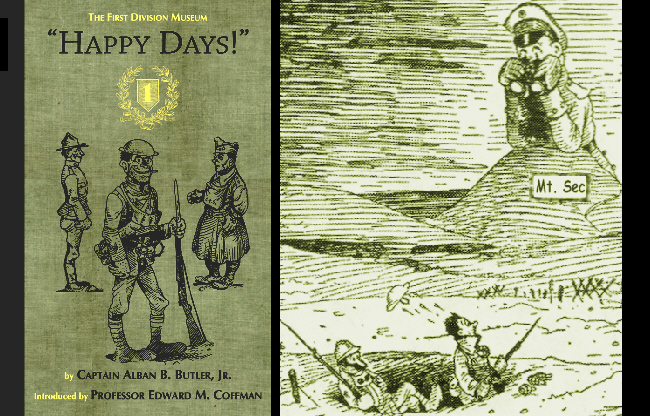
"Happy Days!", The First Division Museum and Capt. Alban B. Butler, Osprey Publishing, 2011, ISBN-13: 978-1849086295.
|
|
|












